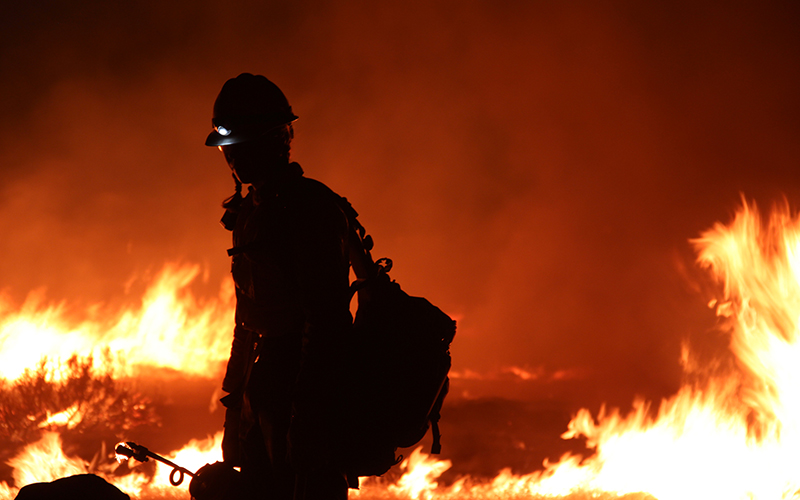
Fire officials say that conditions in southern Arizona could pave the way for an heavy wildfire seasion this year. (Photo by Tim Mason/U.S. Forest Service)
WASHINGTON – Southern Arizona is looking at a “very dangerous” wildfire season with a “tremendous amount of fire” after a spring of record dryness and above-average temperatures, fire officials say.
While fire officials in northern parts of the state expect a fairly normal season, conditions in the southern Arizona – particularly the southwest – have already sparked a significant number of fires, with little likelihood the numbers will fall off.
“We’re busy, busy, busy,” said Capt. Todd Cupell of the Corona de Tucson Fire Department.
The National Interagency Fire Center said almost 2,300 wildfires burned more than 300,000 acres in 2016, and officials say the state could repeat those numbers this year.
The University of Arizona’s Climate Assessment for the Southwest said southwestern portions of the state experienced record dryness and above-average temperatures in April, while the Southwest Coordination Center’s seasonal outlook report said fire potential through July is above average for that part of the state.
Chuck Maxwell, fire meteorologist for the Southwest Coordination Center, said forecasters look at many factors to predict fire potential, including drought, weather patterns and monsoons.
If the state can get some stretches of low temperatures with some humidity and less wind, it would help the situation from “spiraling out of control,” Maxwell said. But so far, that’s wishful thinking, say chiefs in southern Arizona.
“We didn’t get as much rain as we would have liked,” said Carlos Parra, fire chief for the Nogales suburban district. He said that has left “plenty of fuel” in the area.
Southern Arizona is especially prone to fires due to the high and dry brush and grassland.
“Our fuels are dry and in abundance,” Cupell said. “I’m looking at this year in southern Arizona as pretty bad compared to some years.”
Dolores Garcia, public affairs specialist for the Bureau of Land Management in Arizona, said last week that Arizona is “already seeing a fairly active season.”
While there have not been many large fires, the bureau is experiencing daily smaller, roadside fires, Garcia said. She estimates that 90 percent of the fires are manmade.
Cupell said that current dry conditions, mixed with the amount of wind, means that “any spark causes a fire that grows.”
He said Thursday that his department has already seen “well over 20” wildfires since January and that many have been “very serious,” citing the Sawmill fire as an example, which burned nearly 47,000 acres.
“(Southern Arizona) kind of has potential for fires year-round. We even burn in February,” Cupell said.
While southern and southwestern Arizona may be looking at a troubling season, Wesley Hall, fire planner for the Coconino National Forest, said he doesn’t expect anything “crazy” or “out of the ordinary.”
Hall said northern Arizona is looking at a pretty average year in terms of wildfires, and that they’re just “trying to get through the dry period to the monsoon season.”
Concerns over the current wildfire season come as federal officials are considering a deep cut to the Forest Service budget in fiscal 2018. The Trump administration has proposed cutting the service’s overall budget by $970 million, a 15.7 percent cut, which includes the removal of the FLAME fund, a reserve fund for wildfire suppression.
It comes at a time when firefighting costs have been increasing. The NIFC reported that 2015 and 2016 cost the federal government more to fight fires than any time in the previous 30 years.
“People need to be very careful” until monsoon season comes, Cupell said.